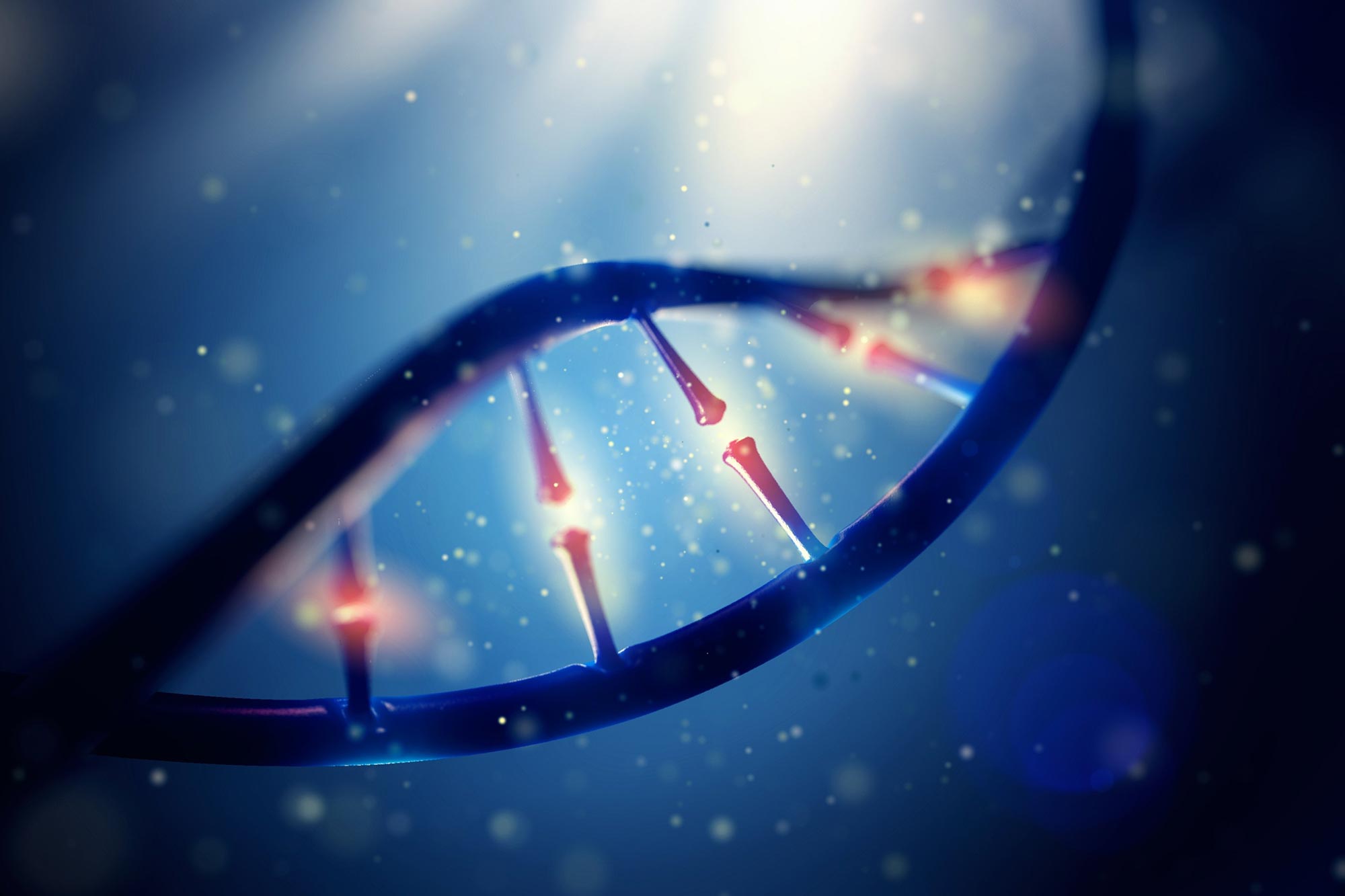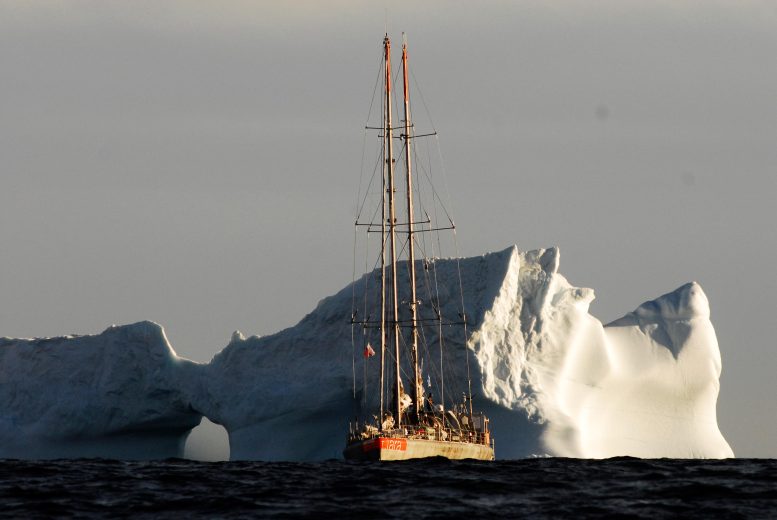
Scientists recently uncovered a trove of new data on RNA viruses in the ocean, including 5,500 new RNA virus species. The analysis suggests that a small part of them had genes “stolen” from the organisms they infected, helping to identify their roles in marine processes. Several can help bring carbon absorbed from the atmosphere to permanent storage on the ocean floor.
The study identifies more than 1,200 RNA viruses with connections to carbon flow.
Many scientists believe that climate change is a major threat and that we are running out of time to act. On top of that, new research shows that trees may not be as effective in combating climate change as we thought. Wouldn’t it be great if we could absorb excess carbon from the atmosphere and lock it permanently in the ocean floor?
It may sound like science fiction, but in fact this is in the realm of possibility. The ocean is incredibly vast, and as we learn more about the microbes that live there and their interaction with carbon, it is possible to imagine engineering projects that could increase carbon storage in the ocean.
A deep dive into the 5,500 species of marine RNA viruses that scientists recently identified found that several can help bring absorbed carbon from the atmosphere to permanent storage on the ocean floor.
The analysis also suggests that a small portion of these newly identified species had genes “stolen” from the organisms they infected, helping researchers identify their putative hosts and roles in marine processes.
Beyond mapping a source of fundamental ecological data, the research is leading to a more complete understanding of the outsized role these tiny particles play in the ocean ecosystem.
“The findings are important for model development and prediction of what is happening to carbon in the right direction and at the right magnitude,” said Ahmed Zayed, a research scientist in microbiology at The Ohio State University and co-author of the study. .
The question of magnitude is a serious consideration when considering the vastness of the ocean.
Lead author Matthew Sullivan, a microbiology professor at Ohio State, plans to identify viruses that, when engineered on a large scale, could function as controllable “knobs” on a biological pump that affect how carbon is stored in the ocean.
“As humans deposit more carbon into the atmosphere, we rely on the enormous buffering capacity of the ocean to slow climate change. We are becoming more and more aware that we might need to tune the pump to the scale of the ocean,” Sullivan said.
“We would be interested in viruses that could tune to more digestible carbon, allowing the system to grow, produce ever larger cells, and sink. And if it sinks, we gain another hundreds or thousands of years from the worst effects of climate change.
“I think society basically has that kind of technological solution, but it’s a complex fundamental scientific problem to tease apart.”
The study was published on June 9, 2022 in the journal Sciences.

A network-based ecological interaction analysis showed that the diversity of RNA viral species was higher than expected in the Arctic and Antarctic. Credit: Tara Ocean Foundation
These
” data-gt-translate-attributes=”[{“attribute=””>RNA[{“attribute=””>RNA[{“atributo=””>ARN[{“attribute=””>RNA Viruses were detected in plankton samples collected by the Tara Oceans Consortium, an ongoing global study aboard the schooner. Tare of the impact of climate change on the ocean. The international effort aims to reliably predict how the ocean will respond to climate change by becoming familiar with the mysterious organisms that live there and do most of the work of absorbing half of the human-made carbon in the atmosphere and producing half of the oxygen we breathe. .
Although these marine viral species do not pose a threat to human health, they behave like all viruses, each infecting another organism and using its cellular machinery to make copies of itself. Although the result could always be considered bad for the host, the activities of a virus can have benefits for the environment, for example by helping to dissipate a harmful algal bloom.
The trick to defining where they fit in the ecosystem has been the development of computational techniques that can glean insights into viral RNA and host functions from fragments of genomes that, by genomics standards, are small to begin with.
“We let the data be our guide,” said co-author Guillermo Dominguez-Huerta, a former postdoctoral researcher in Sullivan’s lab.
Statistical analysis of 44,000 sequences revealed structural patterns of virus communities that the team used to assign RNA virus communities into four ecological zones: arctic, antarctic, temperate, and tropical epipelagic (closest to the surface, where
” data-gt-translate-attributes=”[{“attribute=””>photosynthesis[{“attribute=””>photosynthesis[{“atributo=””>fotosíntesis[{“attribute=””>photosynthesis occurs), and Temperate and Tropical Mesopelagic (200-1,000 meters deep). These zones closely match the zone assignments for the nearly 200,000 seafarers
” data-gt-translate-attributes=”[{“attribute=””>DNA[{“attribute=””>DNA[{“atributo=””>ADN[{“attribute=””>DNA virus species that the researchers had previously identified.
There were some surprises. While biodiversity tends to expand in warmer regions near the equator and dip near cooler poles, Zayed said a network-based ecological interaction analysis showed that the diversity of RNA viral species was higher than expected in the Arctic and Antarctica.
“When it comes to diversity, viruses don’t care about temperature,” he said. “There were more apparent interactions between viruses and cellular life in the polar areas. That tells us that the great diversity we’re seeing in the polar areas is basically because we have more viral species competing for the same host. We see fewer host species but more viral species infecting the same hosts.”
The team used several methodological approaches to identify potential hosts, first inferring the host based on virus classification in the context of marine plankton and then making predictions based on how the numbers of viruses and hosts “co-vary” because their abundance depends on each other. The third strategy was to find evidence of integration of RNA viruses in cell genomes.
“The viruses we are studying do not insert into the host genome, but many integrate into the genome by accident. When it happens, it is a clue about the host because if you find a virus signal within the genome of a host, it is because at some point the virus was inside the cell,” said Domínguez-Huerta.
While most dsDNA viruses were found to infect bacteria and archaea, which are abundant in the ocean, this new analysis found that RNA viruses primarily infect fungi and microbial eukaryotes and, to a lesser extent, invertebrates. Only a small fraction of marine RNA viruses infect bacteria.
The analysis also yielded the unexpected discovery of 72 discernible functionally different helper metabolic genes (AMGs) scattered among 95 RNA viruses, providing some of the best clues about what types of organisms these viruses infect and what processes metabolic are trying to reprogram. to maximize the “manufacture” of viruses in the ocean.
Further network-based analysis identified 1,243 RNA virus species related to carbon export and, very conservatively, 11 were assumed to be involved in promoting carbon export to the deep sea. Of these, two host-linked viruses from the algae family were selected as the most promising targets for follow-up.
“Modeling is getting to the point where we can take gene bags from these large-scale genomic studies and paint metabolic maps,” said Sullivan, also a professor of civil, environmental and geodetic engineering and founding director of the State Microbiome Science Center. from Ohio. .
“I’m envisioning our use of AMG and these viruses that are predicted to infect particular hosts to mark those metabolic maps to carbon that we need. It is through that metabolic activity that we should probably act.”
Reference: “Diversity and Ecological Footprint of Global Ocean RNA Viruses” by Guillermo Dominguez-Huerta, Ahmed A. Zayed, James M. Wainaina, Jiarong Guo, Funing Tian, Akbar Adjie Pratama, Benjamin Bolduc, Mohamed Mohssen, Olivier Zablocki, Eric Pelletier, Erwan Delage, Adriana Alberti, Jean-Marc Aury, Quentin Carradec, Corinne da Silva, Karine Labadie, Julie Poulain, Tara Oceans Coordinators§. , Chris Bowler, Damien Eveillard, Lionel Guidi, Eric Karsenti, Jens H. Kuhn, Hiroyuki Ogata, Patrick Wincker, Alexander Culley, Samuel Chaffron, and Matthew B. Sullivan, June 9, 2022, Science.
DOI: 10.1126/science.abn6358
Sullivan, Dominguez-Huerta and Zayed are also team members at the EMERGE Biology Integration Institute at Ohio State.
This research was supported by the National Science Foundation, the Gordon and Betty Moore Foundation, the Ohio Supercomputer Center, the Ohio State Microbiome Science Center, a Ramon-Areces Foundation Postdoctoral Fellowship, Laulima Government Solutions/ NIAID and France Genomique. The work was also made possible by unprecedented sampling and science from the Tara Oceans Consortium, the nonprofit Tara Ocean Foundation, and their partners.
Other co-authors on the paper include James Wainaina, Jiarong Guo, Funing Tian, Akbar Adjie Pratama, Benjamin Bolduc, Mohamed Mohssen, and Olivier Zablocki, all from the Sullivan lab; Jens Kuhn of the National Institute of Allergy and Infectious Diseases; Alexander Culley of Universite Laval; Erwan Delage, Damien Eveillard and Samuel Chaffron from the University of Nantes; Lionel Guidi of the Sorbonne University; Hiroyuki Ogata of Kyoto University; Chris Bowler of the Ecole Normale Supérieure; Eric Karsenti from the Ecole Normale Supérieure and the European Molecular Biology Laboratory; and Eric Pelletier, Adriana Alberti, Jean-Marc Aury, Quentin Carradec, Corinne da Silva, Karine Labadie, Julie Poulain, and Patrick Wincker of Genoscope.
Source: scitechdaily.com